Why is There Less Art in Evangelical Churches than in Roman Catholic Churches?
Presentation of my study leave 2025 hypothesis
Prior to arriving in Chiapas for my study leave project, I formulated the following hypothesis:
The dearth of art, a result of an imbalance of the Transcendentals in evangelical churches, influenced and shaped by the English Puritans, is a lingering reaction to the plethora of art in the Roman Catholic Church, suspected of syncretism and idolatry, in its use of indigenous art and customs.
I know - it’s a mouthful. But I wanted to capture all of the training I have formally received as an ordained Presbyterian/Reformed minister. On my recent study leave, I decided to test this teaching and view. I chose Chiapas because it is home to a concentration of Presbyterian congregations, members of the National Presbyterian Church of Mexico as well as home to many Roman Catholic parishes with sanctuaries full of folk art.
18 days in a new context for me is not sufficiently long to be dogmatic, especially given the language hurdles - I speak fluent English and a colorful Spanglish, while the locals speak fluent Spanish and fluent Tzeltal and Tzotzil. Fortunately, the art speaks louder than words.
My “scratching the surface” observations have supported my hypothesis. Along the way, I learned quite a bit, sufficiently proving my study leave to be worth the effort. I love to learn but I do get into ruts. To say the least, studying the use of art in Christian worship and the balance of the Transcendentals, has been a stimulating project.
So, let me walk you through my dense hypothesis, with a few visuals to make it palatable.
#1 = “The dearth of art, a result of an imbalance of the Transcendentals in the evangelical churches….” I use the term, “evangelical,” because the Mexican community uses this term to describe any Christian church that is not Roman Catholic.
Look at the following photos and you will readily see a “dearth of art”:
The three Transcendentals, the Medieval Church borrowed from Plato and Aristotle - Truth, Goodness, and Beauty - have been used in pursuit of knowing and worshipping God. I expected to see bare sanctuaries among the evangelical churches in Mexico, just as I have seen in North America. In many of these, the first two Transcendentals are in full swing - Bible studies, long, expositional sermons complete with encouragement towards moral behavior. Truth and Goodness are highly valued in these churches. My question = Why is there less art in these evangelical churches than there is in the Roman Catholic Church? How are these evangelical churches balancing Truth and Goodness with Beauty? Why does Beauty as a Transcendental get the short end of the stick?
#2 = “…in the evangelical churches, influenced and shaped by the English Puritans, is a lingering reaction…” The evangelical churches in Mexico have been established mostly by North American and European missionaries, who have been shaped by the English Puritans. Let me say what is a defensible summary of the English Puritan view of art in the church. From their perspective, art in the church is idolatrous, or at best a distraction. (English Puritans encouraged the arts in all forms in private homes and spaces outside the church.) This perspective and practice of gutting the church of art is a lingering reaction to the Roman Catholic use of art in the church.
The evangelical churches in Mexico have been schooled in this perspective. A statue of Jesus hanging on the Roman Cross is a distraction to the preaching of the gospel of the cross. To paint the face of Jesus, when we don’t know what he looked like in real life, is idolatry - we might worship the painting of Jesus instead of worshipping the actual person of Jesus. Statues and paintings of Mary, the mother of Jesus, the Apostles and the saints are idolatry, or at least a visual and abiding opportunity for someone to worship them instead of worshipping God alone. At best these are a distraction from the simple elements of bread and wine at the Lord’s Supper. ( I didn’t have to travel to Chiapas to nail down this part of my hypothesis.)
#3 = “… is a lingering reaction to the plethora of art in the Roman Catholic Church, suspected of syncretism and idolatry, in its use of indigenous art and customs.” These following photos show the plethora of art in the Roman Catholic Church in Chiapas:
The above photos all show typical Roman Catholic art in the tradition of European motifs arriving in Chiapas with the colonization of Mexico in the 1500’s. To this art, the Roman Catholic Church in Chiapas has added the art of Our Lady of Guadalupe, the most significant example of syncretism in the religious art of Mexico. Roman Catholic missionaries, who heard of Juan Diego’s vision of Our Lady of Guadalupe, on December 9, 1531 successfully persuaded many indigenous people that she and all of their Azteca and Mayan virgin goddesses were manifestations of the Blessed Virgin Mary, the Mother of Jesus. (Juan Diego was one of the first indigenous people to convert to Christianity in Mexico.) This is syncretism - the amalgamation of different religious motifs, beliefs and customs. In the vast majority of sanctuaries in Chiapas, the Virgin Mary and Our Lady of Guadalupe are positioned lower and to the side of Jesus Christ, who is divine and supreme. But now and then, like in the Church of Our Lady of Guadalupe in San Cristobal de las Casas, the local goddess is front and center - all over the place - even at the Font!
She’s at the Baptismal Font!
Series of Windows tell the story of Our Lady of Guadalupe appearing to Juan Diego in a vision.
Statue of Juan Diego
In reaction to such art in Roman Catholic sanctuaries, evangelical Christians, influenced by the English Puritans, have worshipped in sanctuaries stripped bare of art. I know all about it. As a child, while my Dad was preaching, I would watch the flies buzzing near the ceiling. My older sister and I, pretending to take notes on the sermon, would be passing notes on lesser topics, or finding the page in our Red Letter Bibles that was all red font (It’s in Matthew’s Gospel - The Sermon on the Mount.) During prayer, with every head bowed and eyes closed, we were peaking at parishioners. I was the daydreaming boy looking out the clear glass windows. Heaven forbid the window would be a stained glass depiction of the Nativity! (Ya! I was working out some personal baggage on my study leave.)
If you are reading this post and have yet to take my Quiz on this topic, then please visit my Substack. Go to substack.com and search for Nathan E. Lewis. In my cue of posts, look for a recent article titled, “Is Pursuit of God's Beauty as Important as Pursuit of Divine Truth and Goodness?” You can subscribe for free and then leave a comment telling me what you think.
If you have been reading my Substack articles via emails I send to you, please help me reach a larger audience than my friends by subscribing free to my substack. I don’t write for money - I write for discussion and influence.

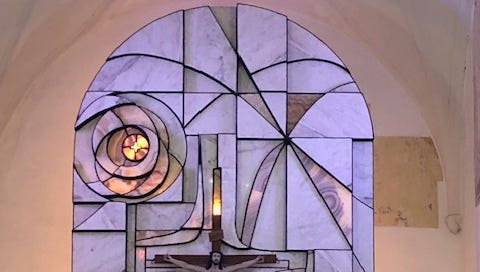


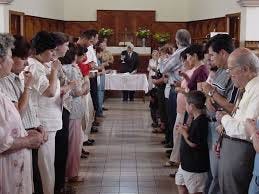




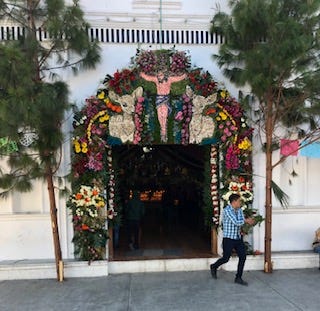
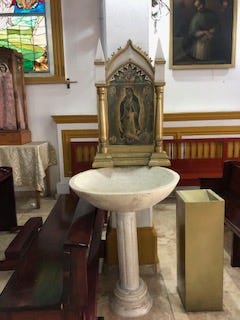
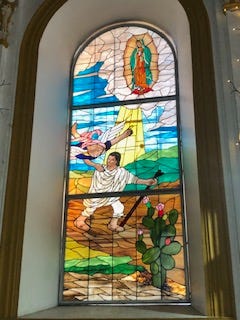
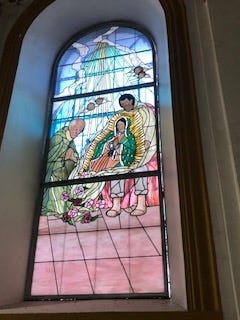
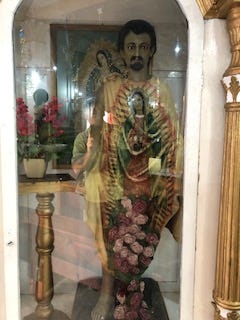
Nathan thank you for posting on this topic. I feel strongly that God created all humans to create. We are created in His image. He is the ultimate creator. Recently we had a service where artists were invited to create as a response to the worship service during the service. It was so powerful to be one of the artists. I also lead a Bible study from the book- Imaging the Story. The study was about worship through the artistic expression. I hope art will become a welcomed form of worship as I feel it should be. Blessings!